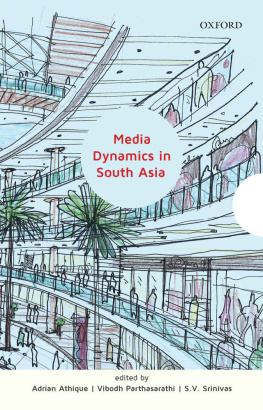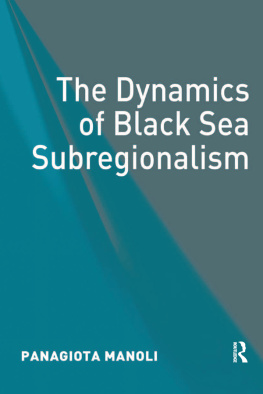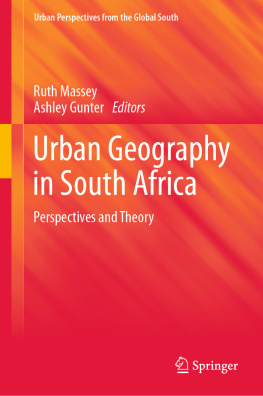First published 1981 by Transaction Publishers
Published 2017 by Routledge
2 Park Square, Milton Park, Abingdon, Oxon OX14 4RN
711 Third Avenue, New York, NY 10017, USA
Routledge is an imprint of the Taylor & Francis Group, an informa business
Copyright 1981 William John Hanna and Judith Lynne Hanna.
All rights reserved. No part of this book may be reprinted or reproduced or utilised in any form or by any electronic, mechanical, or other means, now known or hereafter invented, including photocopying and recording, or in any information storage or retrieval system, without permission in writing from the publishers.
Notice:
Product or corporate names may be trademarks or registered trademarks, and are used only for identification and explanation without intent to infringe.
Library of Congress Catalog Number: 2008028409
Library of Congress Cataloging-in-Publication Data
Hanna, William J.
Urban dynamics in Black Africa : an interdisciplinary approach / William J. Hanna and Judith L. Hanna.
p. cm.
Includes bibliographical references and index.
ISBN 978-0-202-36273-1 (alk. paper)
1. Cities and towns--Africa, Sub-Saharan. 2. Cities and towns--Africa, Sub-Saharan--Bibliography. 3. Urbanization--Africa, Sub-Saharan. 4. Urbanization--Africa, Sub-Saharan--Bibliography. I. Hanna, Judith Lynne. II. Title.
HT148.S8H36 2008
307.760967--dc22
2008028409
ISBN 13: 978-0-202-36273-1 (pbk)
Contents
Preface and Acknowledgments
This new, revised edition of our 1971 book explores events and theories pertinent to an understanding of urban Africa in the 1980s. The trajectory of urbanization and industrial modernization has increasingly been uneven. Political tyrants such as Bokassa of the Central African Empire and Amin of Uganda have come, wrecked their countries economies and civic cultures, and been overthrown with the help of outside intervention. Stable transitions of governance occurred in Kenya after the death of Kenyatta and in Nigeria as the military stepped aside for the return to civilian rule. Now Africa enters its third decade of independence; its urban dynamics must be reconsidered.
In this revision we have incorporated interpretations based upon current work on dependency theory and class and gender analysis, and we have added relevant descriptions and data from the 1970s. These appear, for the most part, in , cities have grown, regimes have been violently overthrown, and other changes have taken place. However, in our view the life of the typical African townsman and woman has remained very much the same for almost two decades.
Credit for bringing this study to fruition must be widely shared. James Coleman first interested us in the politics of independent Black Africa. Several trips for research in Africa, supported by the National Science Foundation, the Ford Foundation, and the African Studies Centers of the University of California at Los Angeles and Michigan State University, provided us with necessary first-hand knowledge of Africa and Africans. Work on this manuscript has in part been supported by The Research Foundation of The City University of New York, the Comparative Administration Group of the American Society for Public Administration, and the Center for Family, Housing, and Community Development of The University of Maryland. Many of our ideas were sharpened by collegial discussions at the University of Ibadan and Makerere University. William Bascom, Peter Duignan, Daniel McCall, Alvin Magid, Immanuel Wallerstein, Aristide Zolberg, and the late Hortence Powdermaker are among those who read earlier versions of the manuscript; their comments were of considerable help in preparing the first edition. We have also profited from the reviews of the first edition written by Igolima T. D. Amachree, Peter C. W. Gutkind, William A. Hance, Kenneth Little, Richard Stern, and the late Hugh H. Smythe. Ana Maria Veria helped with portions of the revision, and Linda Hoffman provided the necessary support services.
It is our hope that this book will in some small way repay the people of Africa for the hospitality and friendship they have shown us here and abroad. Our dedication, therefore, is to our friends in Ibaban, Umuahia, Mbale, and elsewhere in Africa who have made it all possible.
Urban Areas of Black Africa Referred to in This Study
1. Aba, Nigeria
2. Abeokuta, Nigeria
3. Abidjan, Ivory Coast
4. Accra, Ghana
5. Ado, Nigeria
6. Bamako, Mali
7. Bangui, Central African Republic
8. Bathurst, Gambia
9. Benin (City), Nigeria
10. Bida, Nigeria
11. Blantyre-Limbe, Malawi
12. Bo, Sierra Leone
13. Brazzaville, Congo
14. Broken Hill, Zambia
15. Bujumbura (Usumbura), Burundi
16. Calabar, Nigeria
17. Cape Coast, Ghana
18. Chingola, Zambia
19. Conakry, Guinea
20. Cotonou, Benin
21. Dakar, Senegal
22. Dar es Salaam, Tanzania
23. Djenne, Mali
24. Douala, Cameroon
25. Ede, Nigeria
Ekuasi, Ghana (see Sekondi-Takoradi, Ghana)
26. Entebbe, Uganda
27. Enugu, Nigeria
28. Fort Lamy, Chad
29. Fort Portal, Uganda
30. Freetown, Sierra Leone
31. Goa, Mali
32. Gulu, Uganda
33. Ibadan, Nigeria
34. Ife, Nigeria
35. Ikere, Nigeria
36. Ilesha, Nigeria
37. Illa, Nigeria
38. Ilorin, Nigeria
39. Iseyin, Nigeria
40. Iwo, Nigeria
41. Jadotville, Zaire
42. Jinja, Uganda
43. Jos, Nigeria
44. Kaduna, Nigeria
45. Kahama, Tanzania
46. Kampala, Uganda
47. Kano, Nigeria
48. Katsina, Nigeria
49. Kenema, Sierra Leone
50. Keta, Ghana
51. Kinshasa (Leopoldville), Zaire
52. Kisangani (Stanleyville), Zaire
53. Kisumu, Kenya
54. Kita, Mali
55. Kitwe, Zambia
56. Koforidua, Ghana
57. Kolwezi, Zaire
58. Kumasi, Ghana
59. Lagos, Nigeria
60. Libreville, Gabon
61. Lome, Togo
62. Luanshya, Zambia
63. Lubumbashi (Elisabethville), Zaire
64. Luluabourg, Zaire
65. Lunsar, Sierra Leone
66. Lusaka, Zambia
67. Magburaka, Sierra Leone
68. Maiduguri, Nigeria
69. Makeni, Sierra Leone
70. Mbale, Uganda
71. Mbandaka (Coquilhatville) Zaire
72. Mengo, Uganda
73. Mombasa, Kenya
74. Monrovia, Liberia
75. Mufulira, Zambia
76. Mushin, Nigeria
77. Mwanza, Tanzania
78. Nairobi, Kenya
79. Ndola, Zambia
80. New Juaben, Ghana
81. Ngaoundere, Cameroon
82. Niamey, Niger Nkontompo, Ghana (see Sekondi-Takoradi, Ghana)
83. Nsawam, Ghana
84. Nyakrom-Nkum, Ghana
85. Obuasi, Ghana
86. Oda-Swedru, Ghana
87. Ogbomosho, Nigeria
88. Onitsha, Nigeria
89. Oshogbo, Nigeria







